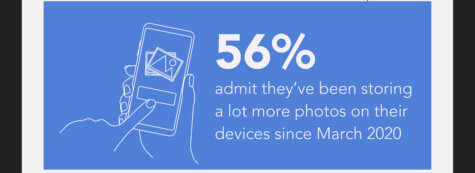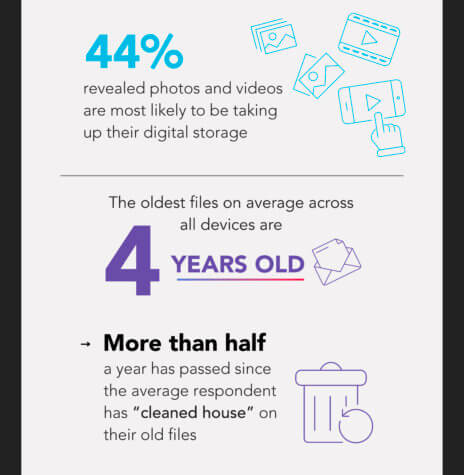New survey also reveals some of the strangest things that people are collecting… like banana plants and gargoyles.
NEW YORK — Hoarding junk isn’t just a problem in people’s attics. In fact, Americans say if digital files on their phones and computers were real, they would take up their entire house. That’s according to a recent survey of 2,000 Americans, which finds that entertainment-related items — such as photos, videos, and video games — take up the bulk of space in people’s digital lives.
Americans’ homes are like miniature museums, filled with collections of CDs, comic books and even “swords of any kind.” That’s right — researchers also delved into the strangest things that people collect (full list at bottom of post), and there sure were some oddities. From “frozen pizza packaging” to “carnivorous plants” to plain old dust, it turns out people are filling their homes with items that some might consider downright creepy.
Yet, four in 10 say their digital desktop is no cleaner than their actual desktop. Conducted by OnePoll on behalf of Western Digital, the survey aimed to discover how the pandemic is affecting people’s digital storage habits.
Americans are more reliant on technology
 Spending the last year-plus inside is making people rely on their digital devices for everything from work to socializing. Six in 10 say they’ve become more reliant on their tech than ever before. Although they haven’t been outside as much due to COVID, 56 percent admit they’ve been storing even more photos on their devices since March 2020.
Spending the last year-plus inside is making people rely on their digital devices for everything from work to socializing. Six in 10 say they’ve become more reliant on their tech than ever before. Although they haven’t been outside as much due to COVID, 56 percent admit they’ve been storing even more photos on their devices since March 2020.
Photos and videos take up 44 percent of digital storage, followed by documents (41%) and screenshots (38%). Two in three Americans admit their camera roll is a bit of a wreck and could probably use an organizing guru.
 While 66 percent have become more organized and embraced a more streamlined digital lifestyle, more than half a year has passed since they’ve “cleaned house” on their old files. It’s no surprise, then, that the oldest files on average across all devices are four years old.
While 66 percent have become more organized and embraced a more streamlined digital lifestyle, more than half a year has passed since they’ve “cleaned house” on their old files. It’s no surprise, then, that the oldest files on average across all devices are four years old.
“People’s digital collections have just as much meaning to them as physical items,” a Western Digital spokesperson says in a statement.
Six in 10 almost never delete pictures and video from any of their devices, with 43 percent citing the sentimental value attached to these files. Digital cleanup is made all the more difficult with more kinds of tech, as 70 percent say they’ve been multitasking across devices this year more than ever before. Nearly six in 10 wish there was a way to see all of their content in one place.
“Part of the challenge in organizing your digital storage is having files on multiple devices, and not always being able to move them between devices because of compatibility issues,” the spokesperson adds. “Saving or backing up your files to another device frees up space without having to choose what to keep or delete.”
TOP 10 STRANGEST THINGS AMERICANS COLLECT
Banana plants
Raccoons and penguin statues
A portrait of Wolverine
Dust
Gargoyles
Frozen pizza packaging
Swords of any kind
Living Dead Dolls
Old automotive parts
Carnivorous plants
TOP 5 REASONS FOR NOT DELETING OLD FILES
They are memories I could never delete from my devices – 43%
I feel bad deleting old files (pictures, videos, etc.) – 43%
I may need those files in the future – 36%
I don’t have time – 32%
I want to be able to show people these files – 31%

Hello!
I do have a problem regarding this article.
How can a digital storage be used to 123% as stated in “Photos and videos take up 44 percent of digital storage, followed by documents (41%) and screenshots (38%).” ?
Also I don’t find any sources to the studies you mentioned.
Thank you in advance